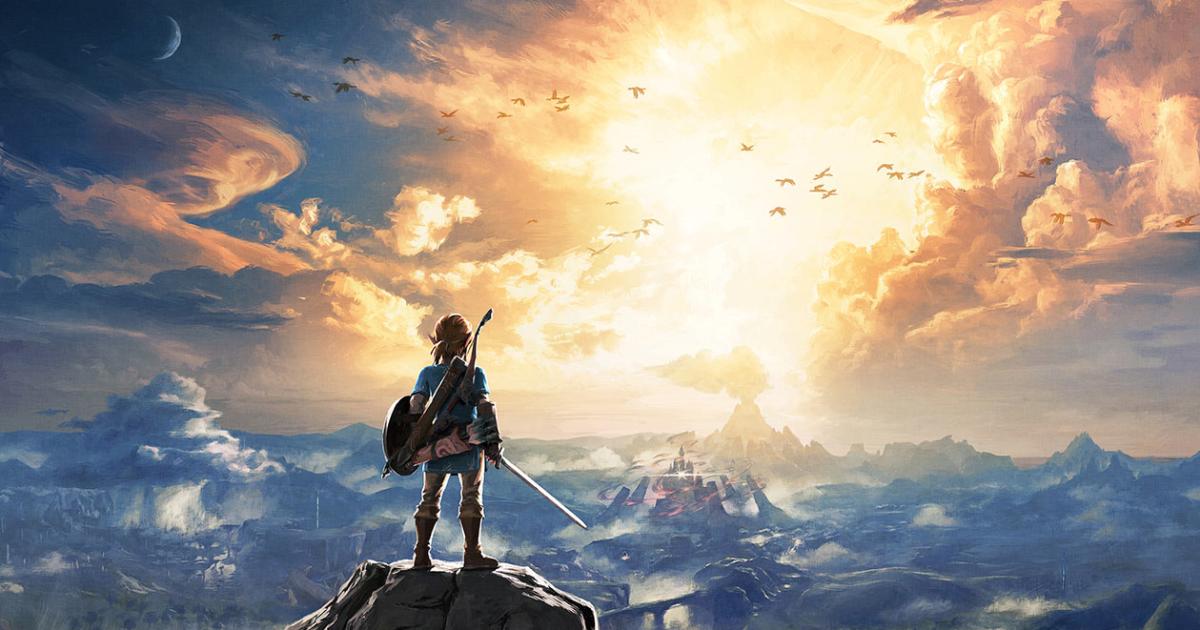Global Courant 2023-04-17 17:30:54
It was after a particularly grueling session with The Legend of Zelda: Breath of the Wild that I started to wonder: When did developers stop putting cheats into their games to help the less talented among us get through the tricky bits? When I was a kid, a little bit of Up Down Left Right A and Start together, and a little older, a little /~noclip saved me no end of bother. These days, if you look for cheats for any modern game online, the best you’ll get is to be sternly told to “git gud.”
Sorry, a little context: I play games, but I’m not a Gamer, or a Nintendo Person, so in 2023 I resolved to remedy this. So many discussions at work fly past me because while I’ve heard of Cliff Bleszinski and Hironobu Sakaguchi, I couldn’t tell you their oeuvre without Googling. Part of my self-education was to watch every Zero Punctuation compilation to speedrun the last decade of games development. Another part was to seek out some classic games that I’d never played through ignorance, weakness, or my own stupid fault.
The first step on this journey only required me to go to the bookshelves in my living room, ironically. I bought my Pokémon Go-loving wife a Nintendo Switch at the start of 2020 so she could play Let’s Go Pikachu!. Not long after, a friend handed me their copy of Breath of the Wild and said I should give it a play. But it’s been sitting on my bookshelf for three years, and I subconsciously resisted the urge to give it a go. This, I’ll admit, is because I’ve always had the notion that Nintendo games are hard work.
And that was my belief until a month ago, when I thought I’d better try Breath of the Wild before Tears of the Kingdom came out. I figured I’d give it half an hour, the smallest of toes dipped into the world, so that I could say I’d tried and that it wasn’t for me. And before you can say “I need to be up at seven in the morning for work,” it was long past midnight. Since then, Breath of the Wild has consumed my every waking moment. It is, without a doubt, one of the most engrossing and immersive games I have ever played, despite my frustrations.
Nintendo
It’s why I felt compelled to write this, because I want to spread the gospel to non-gamers who might feel similarly like they’ve missed the bus. Especially since we can hope that the older game might fall in price nor people seek out its replacement. Or, given the current situation with Nintendo persistently keeping the prices of its older first-party games high, at least it won’t get any more expensive. But, to undermine my own argument, I’d say that if Tears of the Kingdom is half as good as Breath of the Wild, it’ll probably be the first game that’s worth the $70 fee Nintendo’s trying to push consumers into accepting.
Despite its age (it is from 2017, after all), Breath of the Wild feels cutting-edge, and part of that is how deep it is. When I started playing, I worried that it would be yet another soulless open-world grind-a-thon, a feeling not soothed by the presence of Far Cry-esque towers you need to conquer to open up areas of the map. But the one thing that this game has that sets it apart from its genre-mates is a level of curation that continues to surprise me.
It plays out on a sprawling map, but it never feels like you’re traversing through an empty void. The density of what’s available means that, despite spending a month or so covering just half of Hyrule (I’ve only recently reached Goron City), I never stop finding new stuff. And there are some assets that have been reused, like the standard template for enemy camps, but you never feel that they’ve been copy-pasted to pad out the space. This Hyrule feels hand-made, with every detail sweated beyond any player’s comprehension.
Even a philistine like me can appreciate the level of craft, not just in its layout, but how it has been built. Take the chemistry engine, which seems like such a simple idea you wonder why it hasn’t been a part of open worlds forever. By giving each material its own properties, you can take advantage of more than just weight physics to help you solve puzzles. Thanks to YouTube, once I understood how Shock Traps worked, I was able to start making real progress in the shrine quests that put you face to face with a particularly murderous killbot.
And the game’s critical path is left so completely wide open as to almost not matter at all, giving you total freedom. Rather than giving you a set series of missions, you unlock the main quest line after the first hour, and then you can tackle it in any way you wish. I’ve seen more than a few Straight To Ganon speed runs where expert players take a barefoot Link to defeat the title’s big bad within minutes of being able to leave the tutorial area. I love, too, how the landscape gently nudges you towards the safer areas where you can level up before you’re let loose on the harsher climates of, say, Death Mountain.
Nintendo
This works so well that when you’ve gotten a little way along you start picking up weapons that aren’t total garbage. Recently, I was cornered by a Guardian Stalker, very much a one-hit kill villain you can only ever hope of running out of sight from. But, trapped in the North Lomei Labyrinth, I had no option but to try and fight without dying. And I managed to hack off its legs, one by one, until it flopped on its side, unable to shoot me with its laser. The feeling of exhilaration and satisfaction after so many deaths, was one for the ages. You don’t need to get good in the grindy sense, you just need to spend enough time in the world to gently, naturally evolve how you play the game until things get easy.
And this is when I realized there was a good reason developers don’t put cheats into their games anymore. Because a good title, like Breath of the Wild, rarely prescribes how you navigate and solve its world. If you’re not a fighter, you can devote your energies to stealthily circumnavigating your enemies. When you grasp the game’s physics engine, you can use a well-placed remote bomb to send a venom-spitting Lizalfo hurtling down the side of a cliff. The only thing I can’t do yet is take on a Lynel – the game’s super-tough mini-boss – and not get rinsed, because I’m not sure I’ll ever learn the art of parrying.
Now, that may be deficiency enough that I never actually finish the game, since that’s rarely an impediment to getting to the fun bits. Take the shrine quests, which (mostly) offer the most enjoyable physics puzzles since Portal, give or take the aforementioned combat trials. Part of this is because the puzzles can be hard but are never unfairly-formatted, and there’s almost always a solution that’ll come to mind if you just walk around for long enough. The fact there’s no time limit or villain trying to force you to hurry up helps matters considerably.
I have gripes, but they’re all mostly nitpicks. The Switch’s hardware limitations mean that the game’s draw distance can sometimes be a problem. If you’re looking for a spot out of sight of enemies to land your glider on, it can only be once you’re inches from the ground that it’ll finally render a camouflaged Lizalfo. And Nintendo’s policy of never being entirely open with the player to encourage experimentation means you’ll need to have some YouTube tutorial channels bookmarked to help you navigate some of the more baffling bits.
Simon Parkin’s essay about Breath of the Wild in The New Yorker quoted original series creator Shigeru Miyamoto, who described Hyrule as a “miniature garden you can put into a drawer and revisit any time you like.” And this speaks to something I’ve found about the game, that it’s less of a video game and more of a place that you can choose to visit. This vast, pastoral paradise, which you can roam around on foot, climbing mountains or on horseback. A land only spoiled by the regular appearance of a zombified enemy crawling up out of the ground to ruin your reverie.
In a way, as much as I enjoyed having No Man’s Sky as my lockdown game of 2020, I wish I’d been braver and tried Zelda back then. I’d rather spent time inside Miyamoto’s miniature garden, now lovingly tended by Hidemaro Fujibayashi and Eiji Aonuma. And I think I’m going to have to try and get this finished as quickly as possible so that I’m ready to continue my journey in Tears of the Kingdom.
All products recommended by Engadget are selected by our editorial team, independent of our parent company. Some of our stories include affiliate links. If you buy something through one of these links, we may earn an affiliate commission. All prices are correct at the time of publishing.








